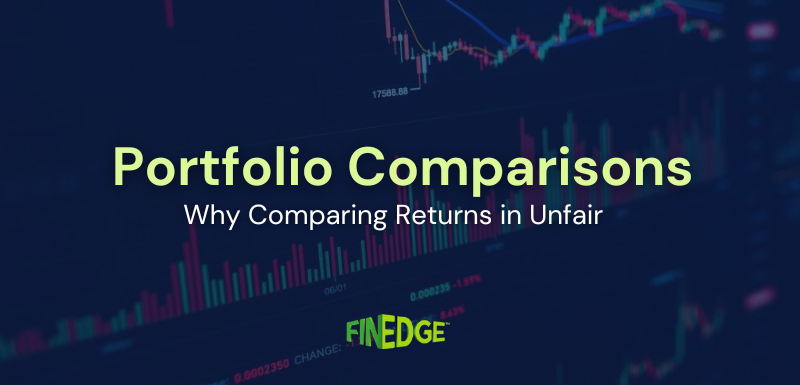Mutual Fund vs. Fixed Deposit Returns Over 10 Years: The Data Speaks
- Fixed Deposits (FDs) have offered 5–9% annual interest over the past decade, but returns are fully taxable.
- Large-cap mutual funds delivered ~14% XIRR returns over 10 years, more than doubling invested amounts.
- Inflation and taxation make a big difference; FD returns often lose purchasing power, while mutual funds remain tax-efficient and wealth-creating.
- Your choice should depend on financial goals: safety and short-term needs suit FDs, while long-term wealth creation calls for mutual funds.
Fixed deposits promise safety and certainty, while mutual funds offer growth and wealth creation. But when you look at 10 years of data, the difference in outcomes is striking, especially once inflation and taxes are considered.
Should you put your money in a fixed deposit or a mutual fund?
This question has been at the heart of investment decisions for Indian households for decades. While fixed deposits are seen as “safe and guaranteed,” mutual funds are often considered “risky but rewarding.”
But what does the data from the last 10 years actually reveal? Let’s compare Mutual Fund vs Fixed Deposit returns over a decade to understand which option truly helps you build wealth.
Fixed Deposits vs Mutual Funds: Understanding the Basics
When choosing between fixed deposits and mutual funds, it’s important to understand how they function and what they’re designed to achieve.
-
Fixed Deposits (FDs):
FDs are one of the most traditional investment products in India. You deposit a lump sum with the bank for a fixed period, and in return, you get a guaranteed interest payout. They are considered safe because your principal is protected and the return is predetermined. This predictability makes them attractive to risk-averse investors, particularly retirees.
However, the very features that make FDs safe also limit their growth potential. Returns are capped, do not adjust for inflation, and are fully taxable, which means your actual wealth creation over time is modest. -
Mutual Funds:
Mutual funds pool money from multiple investors and allocate it across equities, debt, or hybrid instruments depending on the scheme. Equity mutual funds are market-linked, so their short-term performance fluctuates, but they have historically delivered superior long-term growth.
For instance, large-cap mutual funds have delivered average annualized returns of around 14% over the last 10 years through SIPs — more than doubling invested amounts. The key here is discipline and time horizon: those who stay invested tend to benefit the most.
In Short
FDs = safety and predictability, but limited growth.
Returns Over 10 Years: The Numbers Tell the Story
Fixed Deposits
Over the past decade, average FD interest rates have steadily declined:
-
2011–2012: 9.00–9.25%
-
2016–2017: 6.50–6.90%
-
2023–2024: 3.25–9.40% (depending on tenure and bank)
This means that most FD investors earned between 5–7% annually in recent years. After accounting for tax and inflation, the real returns are often close to zero.
Mutual Funds (Large-Cap SIP Example, as of April 30, 2024)
-
10-Year Investment: ₹12,00,000
-
Market Value: ₹25,26,794
-
XIRR Return: 14.25%
Even after market ups and downs, a disciplined SIP in a large-cap mutual fund delivered returns more than double the invested amount.
The Data Speaks
While FDs gave stable but modest growth, mutual funds created significant wealth for long-term investors.
Taxation: FD vs Mutual Fund
-
FDs: Interest is fully taxable at your income slab rate. For those in higher tax brackets, effective post-tax FD returns may fall below 5%. Banks also deduct TDS if annual interest exceeds ₹40,000 (₹50,000 for senior citizens).
-
Mutual Funds: Tax is levied only on capital gains, not annually.
-
Short-Term Capital Gains (STCG): If sold within 1 year, taxed at 20% + cess.
-
Long-Term Capital Gains (LTCG) Tax: If sold after 1 year, taxed at 12.5%. Gains up to ₹1.25 lakh per year are exempt.
This makes mutual funds considerably more tax-efficient than FDs, especially for long-term investors.
The Role of Inflation
Inflation is the hidden factor that quietly erodes the value of money over time. Even if your money grows in nominal terms, what matters is whether it grows faster than inflation.
Let’s assume an average inflation rate of 6%, a realistic benchmark for the Indian economy.
-
If you invest in an FD that offers 8% annual interest, your real return after adjusting for inflation is only about 2%.
-
Once you factor in taxation (for example, a 30% slab reduces 8% to ~5.6%), the effective real return becomes negative. That means your money may grow in numbers, but its purchasing power is actually shrinking.
Now look at mutual funds:
-
Large-cap equity mutual funds delivered about 14% annualized returns over 10 years through SIPs.
-
After adjusting for inflation at 6%, this translates into a strong 8% real return.
-
Even after accounting for long-term capital gains (LTCG) tax of 12.5% on gains above ₹1.25 lakh annually, the real return remains significantly higher than FDs.
This is why investors often find that FDs help preserve money, while mutual funds help grow money in real, inflation-adjusted terms.
Which One Should You Choose?
There is no one-size-fits-all answer. The better option depends on your goals, time horizon, and comfort with risk.
-
When Fixed Deposits Make Sense:
-
Short-term needs such as emergency funds or planned expenses within 1–2 years.
-
Investors who prioritize capital safety and guaranteed returns.
-
Senior citizens or retirees seeking predictable income.
-
When Mutual Funds Make Sense:
-
Long-term financial goals like retirement, children’s education, or wealth creation.
-
Investors aiming to beat inflation and grow real wealth.
-
Those willing to stay invested through market ups and downs for higher long-term returns.
FDs can be an effective short-term parking space for money, while mutual funds are better suited for building wealth over the long run. The choice ultimately depends on whether your priority is stability today or growth for tomorrow.
Final Thoughts
The past 10 years clearly show that while fixed deposits preserve money, mutual funds grow it. FDs remain useful for stability, but for anyone serious about long-term wealth creation, mutual funds have proven to be the superior choice.
FAQs
Your Investing Experts
Continue Reading
From Coffee to Crorepati: Small Lifestyle Tweaks Gen Z Can Make to Start Investing Early
Gen Z is often told to “stop buying coffee” if they want to invest. But that misses the point. Building wealth isn’t about sacrificing everything you enjoy. It’s about understanding how small, everyday decisions shape long-term habits. Starting early even with modest amounts can quietly make a meaningful difference over time.
Why Comparing Investment Returns Can Be Misleading
At some point, most investors have compared their investment returns with a friend, a colleague, or a number they saw online and wondered why their outcomes looked different. While this instinct is natural, return comparisons are often incomplete and, in many cases, misleading. Understanding why returns differ is far more important than comparing the numbers themselves.
CAGR vs XIRR vs Absolute Return: Understanding Which Return Really Matters
When reviewing investment performance, investors often come across multiple return figures absolute return, CAGR, and XIRR. While these numbers may appear similar, they measure performance very differently. Understanding what each metric represents, and when to use it, is essential for making informed investment decisions and setting realistic expectations.

.png)

.png)